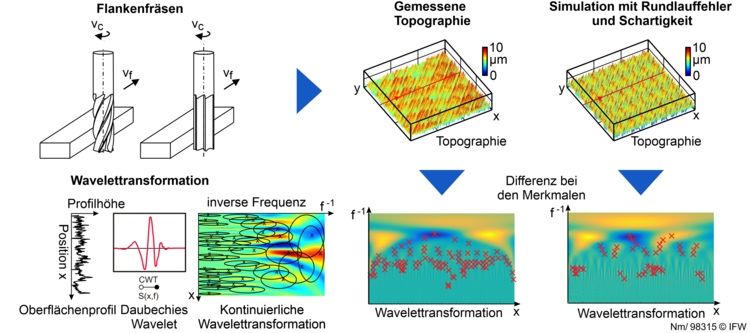Surface formation during milling under consideration of the tool microgeometry
 © IFW
© IFW
| Led by: | Henke Nordmeyer |
| E-Mail: | Nordmeyer@ifw.uni-hannover.de |
| Year: | 2019 |
| Date: | 14-02-20 |
| Funding: | DFG |
| Duration: | 01/2019-07/2022 |
| Is Finished: | yes |
Technical components are usually subject to cyclic loads and are designed for fatigue strength. Consequently, their fatigue behavior plays the decisive role for the structural design. The stages of fatigue are divided into crack initiation, crack propagation and residual fracture. The topography of the component surface in the area of roughness is one of the two decisive influencing variables for the fatigue strength of a component, along with the residual stresses in the edge zone. The shape deviations of technical surfaces are divided into six orders from large (1st order: shape deviation) to small (6th order: lattice structure). Shape deviations of the third to fourth order are referred to as roughness. For the fatigue behavior of the components, the 4th order shape deviation is of decisive interest, due to the stress increase in the valleys of the microtopography of the component. Investigations of the relationships between fatigue strength and roughness characteristics have shown that two-dimensional characteristics are not sufficient for a complete description. Therefore, three-dimensional roughness measurement data should be used with regard to the durability of components.
In this project, machined surfaces are analyzed by wavelet transformation and surface features are identified. For this purpose, a method from the SFB 653 "Intelligent components in the life cycle" is used and extended. This method allows for the first time the qualification of simulated and manufactured surfaces during flank milling on feature level of the individual surfaces. This will be done by comparing the surface features in the wavelet transform. With these findings, surface topographies generated by simulation can be more closely approximated to the actual surface of manufactured components.




















